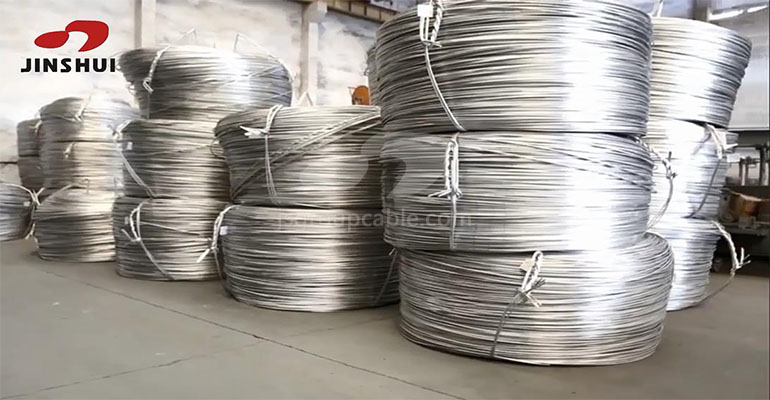- Offices Time:24 Hours Online
- Email:[email protected]
- WhatsApp:+8618339938759

Posted on September 22, 2022
Classification and characteristics of bare conductors
Bare wire is the most basic category of wire and cable products. Part of the bare wire products can be used as conductive wires for wires and cables, and the other part of the products are used as components in motors, electrical appliances, transformers and other equipment. In addition, bare wires can be directly used in electric power, communication, transportation and other departments to transmit power and information. Bare wires should have good electrical conductivity and physical and mechanical properties.
Bare wire has only conductors without insulation and sheathing.
Bare wires can be divided into: bare copper wire, bare aluminum wire, bare aluminum alloy wire, bimetallic wire, etc. According to the shape and structure, it can be divided into: round single wire, bare stranded wire, flexible wiring rain and profiled wire.
The model of bare wire consists of three parts: category, characteristic and derivation.
1.Classification
(1) According to the classification of conductor materials, there are mainly single metal wires, double metal wires, alloy wires, etc.
(2) Classification according to structure shape and use. There are mainly round single wire, shaped wire, bare stranded wire, flexible wiring and so on.
(3) Classification by processing state. Mainly there are soft wire, hard wire, etc.
(4) The material management department often manages the following major varieties, namely bare copper wire, bare aluminum wire, aluminum stranded wire, steel core aluminum stranded wire, copper bar, aluminum bar, copper flat wire, aluminum flat wire, tram wire and many more.
Bare single wire is a wire with bare surface and no insulation layer, which is mainly used in the manufacture of electric power, transportation, telecommunication engineering and motors and transformers.
Bare stranded wires are divided into simple stranded wires, combined stranded wires, special stranded wires, complex stranded wires, braided sleeves, etc.
Profiles and profiles are conductor wires with special shapes or large cross-sections, that is, products with different cross-sectional shapes, which are not round, are called profiles, and products that are not used in larger lengths are called profiles.

2.According to the purpose, it can be divided into three types:
(1) As a high-current bus. This kind of wire is also called a bus bar. The materials used are copper and aluminum row materials. Most of its shapes are flat, and some are made of hollow rectangles and half bows. Used in power plants, substations to transmit large-capacity currents, and in switch cabinets. In recent years, there have been insulated busbars with insulating layers.
(2) Conductors for catenary. Such conductors are used for overhead conductors of electrified railways, city trams, electric locomotives in tunnels, etc. Due to the large-scale development of urban rail transit lines and electrified railways, the use of catenary wires has increased exponentially.
The technical requirements for the contact wire are not only good electrical properties, sufficient tensile strength and good weather resistance, but also its excellent wear resistance, which directly affects the service life.
(3) Special-shaped arrangement of materials. Special-shaped strips are mainly used for commutator elements of various motors, as well as cutter head electrodes of various switches and guillotine knives. Its cross-sectional shape is trapezoidal, unimodal and bimodal, and the material is copper or copper alloy.
3.Storage precautions
(1) Bare wires are afraid of moisture and chemical corrosion, and should be stored in a dry and ventilated warehouse. The relative humidity in the warehouse shall not exceed 70%.
(2) Do not overlap the unpackaged copper wire and aluminum wire to avoid electrochemical action and corrosion of the aluminum wire.
(3) The bare wires should be protected from mechanical damage during storage and transportation, and various types of wires should be careful to avoid twisting and folding.
(4) Bare wires packed in coils should be placed upright. When stacking coils of bare wires, a dunnage should be placed. The stack height should be 1.5-2m. The stack shape must be neat to avoid collapse. The width is preferably 2 rolls for easy inspection.
(5) Bare wires must be inspected regularly to prevent corrosion and deterioration during storage.
Post categories
Most Popular Posts
-
The 136th Canton Fair welcomes you to participate!
October 12, 2024 -
High temperature cable introduction
July 26, 2024 -
Kenya Power and Energy Exhibition 2024
June 11, 2024 -
Introduction of rubber sheathed cable
June 5, 2024





